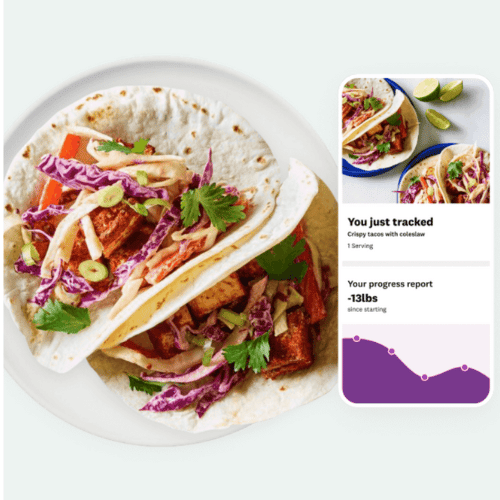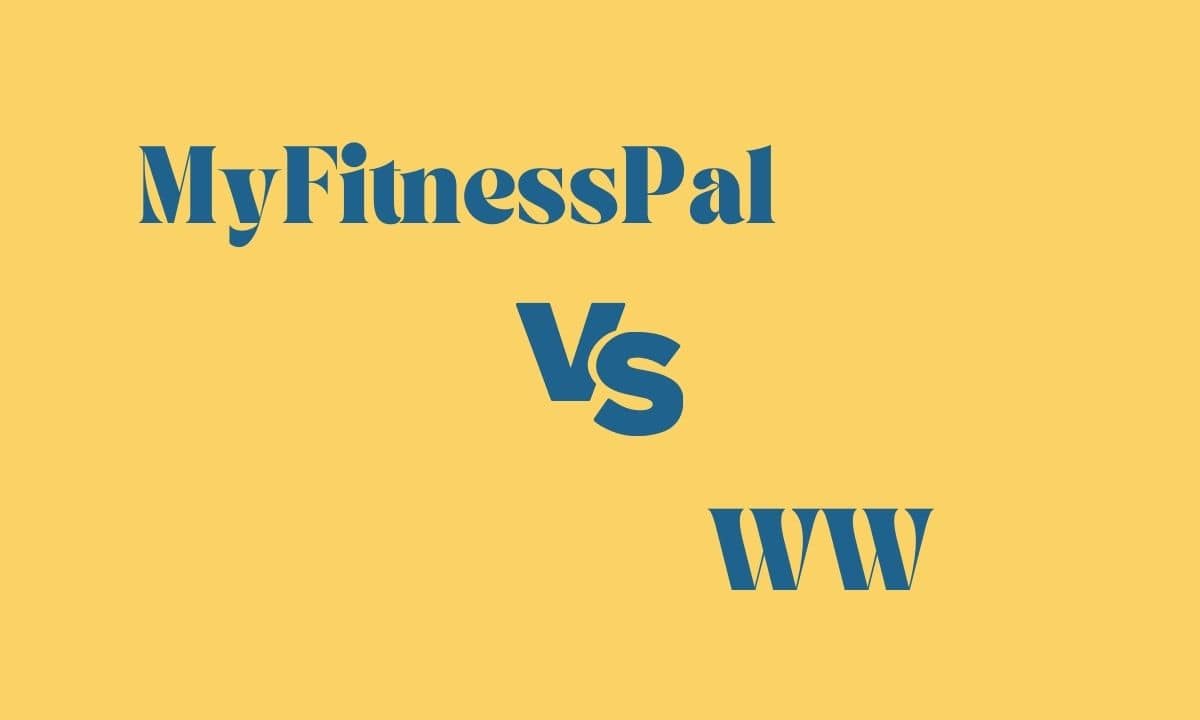MyFitnessPal vs WW [The Dietitian Weighs In]
WW (Weight Watchers 2023)
Table of Contents
ToggleAre you seeking a weight-loss program to help you make healthier food choices, keep you accountable, and help you reach your weight-loss goals?
If so, then MyFitnessPal and WW (formerly Weight Watchers) are two of the popular options out there. But which one is right for you?
As a dietitian, I’ve reviewed and used both programs.
In this article, I’ll explain what sets these two programs apart from each other and provide insight into their respective pros and cons.
How Does MyFitnessPal Work?
MyFitnessPal is an app that enables users to track their diet, physical activity, and progress toward weight-loss goals.
The app provides detailed nutrition information for food items and offers tailored calorie targets based on the user’s personal information.
Users can log in with an existing account or create a new one to start tracking meals, calories, water intake, and physical activities.
The app also offers recipes, barcode scanning, and built-in calculators to help users track their consumption accurately.
How WW Works
WW (formerly Weight Watchers) is a weight-loss program focusing on food, activity, and lifestyle changes.

With the app, members can keep track of their meals and physical activities, access personalized goal-setting tools, connect with health coaches for additional support, and attend weekly meetings.
The program also provides meal plans featuring healthy recipes.
WW does not track calories. Instead, it allocates points to different foods. Members get a daily and weekly point allowance when they first sign up. To lose weight, members are encouraged to stay within their allowed points.
Points vs Calories
MyFitnessPal tracks calories, while WW counts points.
Calories are determined by the components of a food item, such as protein, fat, and carbohydrates. Each of these components carries a different number of calories per gram.
WW points are calculated using a proprietary algorithm that considers the caloric content along with other factors like the amount of sugar, saturated fat, and fiber. Typically, healthier foods have lower points than unhealthy ones, even when they contain similar numbers of calories.
Additionally, WW members can choose from an extensive list of foods with zero-point values. These options motivate members to incorporate more nutrients into their diet.
While it’s not flawless, the point system does motivate members to make healthier choices. However, the point system can be complicated for some people who are used to counting calories.
How do you Know how Many Points you Should be Aiming For?
When you enroll in the WW program, you will receive a points budget that includes both daily and weekly targets. You have the chance to earn extra points by engaging in activities that encourage weight loss, like working out.
Members track their points using the WW app.
How does Myfitnesspal Calculate your Calorie Needs?
MyFitnessPal uses a mathematical formula to calculate calories based on the individual’s weight, height, age, and gender.
How Many Calories is One WW Point?
The number of WW points assigned to a food item is not based solely on its calorie count and can differ from item to item.
For example, it’s possible to eat 1,200 calories using zero points.
You can also use most of your daily points on a 600-calorie meal by choosing relatively high-calorie food with a low nutritional value.
Can WW and MyFitnessPal Help You Lose Weight?
Both of these options help you lose weight and maintain a healthy lifestyle. By tracking your food intake, they both provide accountability and structure to keep you on track with your goals.

MyFitnessPal also offers an extensive food database that makes it easier to count calories or macronutrients in each meal.
WW’s point system makes it easier to track food, and provides the structure and motivation to help you make healthier food choices. The support you can get from other WW members through meetings and groups also makes it a better program for those who need more motivation.
Ultimately, the success of any weight-loss program depends on how you use it. WW and MyFitnessPal can both help you develop healthy habits that support weight loss and maintenance. It’s important to remember that tools are just that—tools, not magic bullets. So your success will be dependent on how well you stick to the program.
Diet Quality

WW is designed to help you eat healthier and balance your diet. It also encourages you to make smarter food choices—like whole grains, lean proteins, and healthy fats. With WW, you can enjoy all the foods you love while maintaining a balanced diet.
MyFitnesPal does not take into account the quality of the nutrients you’re consuming. But the paid version of the app will show the macro and micronutrients you eat.
WW has done an amazing job of considering the quality of their diet when calculating points. In contrast, MyFitnessPal’s main goal is to help you stay within the calorie range you need to lose weight.
Physical Activity
Both apps reward you with additional permitted calories or points for the physical activity you complete.
Support System
WW has a built-in support system that includes meetings, online communities, challenges, recipes, meal plans, and coaches.
These resources can make it easier for you to achieve your goals.
MyFitnessPal does not include meetings, but it has challenges, online communities, recipes, and sends app users helpful emails.
Cost
WW offers a variety of programs at different price points. The basic plan, which does not include meetings, starts at $10 per month for six months.
MyFitnessPal premium plans start at $20 per month or $79.99 annually. However, you can track calories and get basic metrics using the free version.
WW vs MyFitnessPal: The Verdict
Overall, both WW and MyFitnessPal are great tools for those who want to lose weight or eat healthier.
Choosing one over the other is really up to personal preference. As a registered dietitian, I find that the support you get from WW is very helpful.
Having said that, MyFitnessPal can be used along with other weight-loss programs. For example, your registered dietitian or nutritionist can ask you to track your foods in MyFitnessPal to better understand your eating habits.
Ultimately, it’s important to consider your own needs and aims when deciding on which program best suits you.
Other blog posts you might like:
WW vs Calorie Counting [The Dietitian Weighs In]

Dr. Su-Nui Escobar, a Registered Dietitian/Nutritionist in Miami, FL, is dedicated to empowering women in perimenopause and menopause to live healthier, more satisfying lives.
With a doctorate in clinical nutrition from the University of North Florida, she has expertise in menopause and weight loss, including the unique challenges faced by those on weight loss medications.
Su-Nui’s passion for her field is evident in her previous role as the Academy of Nutrition and Dietetics spokesperson.


